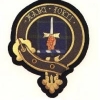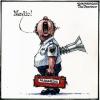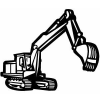
KosherMedic
Members-
Posts
25 -
Joined
-
Last visited
KosherMedic's Achievements
Newbie (1/14)
3
Reputation
-
Well, I have some comments. I would like to preface them by saying that I am not even close to being an expert on this subject, so I may require considerable correction. I recently attended the Critical Care Transport Medical Conference in San Antonio. While I was there I was shocked to hear that our American brothers fly in what I consider unsafe conditions. Many of the medical rotary-wing aircraft are flown by only one pilot and without Night Vision Goggle (NVG) capabilities. Further, the dispatch problems that naturally result from companies that are trying to scoop the flight and make some green when it is too dangerous to fly. In Canada, I believe that all medevac helicopters that are part of the 911 dispatch system are twin-engine aircraft that have two pilots and NVG capability. I honestly thought that this was the standard of care. I have included links to a few of the organisations that provide this level of care here in Canada so you can get an idea of what I had expected to encounter when I visited the USA. http://www.ornge.ca/...Operations.aspx http://stars.ca/bins...asp?cid=3-16-37
-
That's a wise statement. Here's it said another way: "A little leaven leavens the whole lump" (1 Corinthians 5:6) I can't count the number of times I foolishly associated with evil people and then, after a time, began acting in evil ways too.
-
My advice is get out of that situation if you can. Those people will suck the life out of you, as you probably will not be able to change the atmosphere there. You love caring for people, so find another place you can work without being sucked into slime. In the mean time, make the best of what sounds like a terrible situation. It might be easier to deal with if you have an exit plan, as that plan will give you something better to look forward to.
-
An employee should pay for damage they cause? That's what insurance is for. That's the cost of doing business, as stuff happens. Any good manager budgets for things like this. Where I come from, it is illegal for employers to take deductions from employees for damaging equipment. Isn't it bad enough that employers seriously underpay most EMS people that they have to think about docking paychecks? Nothing but greed. The rich get richer by stealing from the poor.
-
http://en.wikipedia....-Blakemore_tube This link says that those who have the SB tubes usually keep them in the refrigerator. They probably do that to make the tube more rigid.
-
medical_mae started following KosherMedic
-
KosherMedic started following ACoP Paramedic Exan and Nurses vs EMT's in EMS
-
It is unique, as it is a break from the traditional airway book we find for prehospital people that is based on anesthesiology. This book is based on prehospital studies and it attempts to tackle the issues we face "in the ditches". Noooooooooooooooooo! I would NEVER give permission to shave my beard! I might prefer a hole in my neck...
-
I don't know what the flight crew did. I would have a very hard time not tubing that patient if I were a member of that crew.
-
Sorry, sir. No Bell 412CF (CH-146 Griffon) is available for your medevac. The choppa that shows up is so sucky that the patient on the spine board cannot be turned to the side to aid drainage of blood from the oropharynx. Yep, you're going to have to suction that airway all the way to town. The ALS provider had to ask the pilot to touch down en route to empty their suction device (sigh). Yeah, that patient should have had their airway captured. The provider did not do that. The facility you're en route to is only a small town hospital. Your patient is to be eventually picked up by a fixed wing air ambulance and flown about 2 hours to a trauma centre.
-
You have a patient who was struck in the left side of the head by a heavy section of pipe on a pipeline project about 30 mins by helicopter from the nearest hospital. The patient was guiding the pipe that a backhoe was moving without a tag line when the backhoe tipped a bit because of uneven ground causing the heavy pipe to strike the patient. The patient presented alert after being initially unconscious, bleeding profusely from mouth with many missing teeth, suspected jaw fracture, and periorbital bruising on left side. Patient is normotensive and not exhibiting signs of shock. Patient has closed fracture of left humerus. Patient is maintaining own airway and welcomes your frequent suctioning. Verbal communication with patient is very difficult. Patient is brought to your remote worksite clinic by the EMT on scene with full spinal precautions in place. The helicopter is on it's way, but it is just a pilot and you will have to accompany patient to the hospital. You are an advanced life support provider. What do you do for this patient? (This is a real situation that I was not involved with that happened recently.) Imagine a piece of 12" x 40' pipe being lifted by that machine and the pipe swinging into the face/side of your patient. Ouch!
-
Belonging to this discussion group is helping to open my eyes. I had no idea that paramedic training in other parts of the world is so different. I have heard that some paramedic programs in the USA are only 90 hours. Is that really true? I was reading what KiwiMedic said about their training in New Zealand and their Intensive Care Paramedic is comparable to the training I received here in Alberta, Canada. Though, our program is a two year technologist diploma that follows a one year technician diploma. Also, our training focuses on the actual skills and knowledge needed for critically injured patients and doesn't include the professional courses like: Psychology and Lifespan Development Knowledge, Enquiry and Communication Health and Environment Professional Practice and Ethics Health Law & Policy Disaster Theory Emergency Planning We do have four year degree programs that cover that material for people who want a professional degree. However, most get their Emergency Medical Technician (year one) and then go back for their Emergency Medical Technologist - Paramedic (years two and three) after getting some experience. Would I think that a nurse/EMT crew would be better than a paramedic/EMT team? Not unless that nurse was also a paramedic. There are things you need to know about working on an ambulance that you cannot learn from a book. And, unless that nurse is allowed to perform the same kinds of advanced airway techniques a Paramedic can then what's the point of them trying to take a paramedic spot? I've worked in remote nursing stations where the nurses thought they could be the local ambulance people too. The vast majority of nurses just don't have the skill sets and experience with pre-hospital patient care they need to function in a prehospital environment - but, you try telling them that. If they want to be ambulance personnel then they should go to school and learn how to do it properly. If a nurse wants to learn how to board a patient in a ditch, goes to the OR and learns how to intubate, and passes a full ALS practicum on ambulance then they've earned the right to take a paramedic spot.
-
Are you in school in Alberta? If so, your school will probably have a good review course or materials.
-
Can I call you Speedy Gonzales? "¡Ándale! ¡Ándale! ¡Arriba! ¡Arriba!" Actually, the scenario I was discussing is where one cannot get an ETT and they need to move on to another way to capture the airway of a patient who is suffocating. So, since they cannot get the ETT tube through the cords they need to move on. If I were the person in the vehicle you wouldn't be able to use a BVM on me very well because of my big beard. People who have a difficult airway have a difficult airway and they may need their neck cut to save their life. I hope the Paramedic who may one day cut my neck open does as little damage as possible. I'd be very happy that they saved my life each time I looked at my scar in the mirror. VentMedic - You're an RRT and EMT-P, right? What do you think of Walls' manual? Do you think that there are good recommendations for EMS personnel in there?
-
Continued... Walls says that a patient like that needs a cric. However, if your partner manages to get a supraglottic airway in place first then that should work fine. "On your mark, get set, GO!" Whoever gets their airway intervention first causes the patient to win and their partner has to buy lunch. Does this make sense to you? I think it makes sense. Concurrent activity. Why should the EMT sit around and watch the Paramedic prep for a cric when they can be trying a supraglottic airway? Haha... nice. I'll pretend that I don't know who he is. To add... All things being equal, I don't think that I would be dissecting to the cric membrane before my partner has the supraglottic airway out of the packaging. I would be examining the patient's neck for contraindications to a cric, landmarking, prepping the skin, taking the scalpel out, and rechecking my landmarks carefully. I imagine that my partner would have tried the supraglottic airway by then. If they failed I would incise the area. And, just so you know, the scenario I am discussing is one where ETT and BVM have failed to oxygenate the seriously injured and unconscious patient who is trapped in a vehicle. Walls does not recommend the use of a supraglottic airway in a patient like this unless it is done while a cric is being readied. As a Paramedic, I would not waste my time on a supraglottic airway that my capable EMT partner is able to utilise.
-
Why would the Paramedic cut into the neck of the patient if his EMT partner got the Combitube in place and was successfully ventilating the patient? He wouldn't. The whole point of them trying their interventions at the same time is to increase their chances of getting an airway in a patient who is suffocating and terribly injured.





